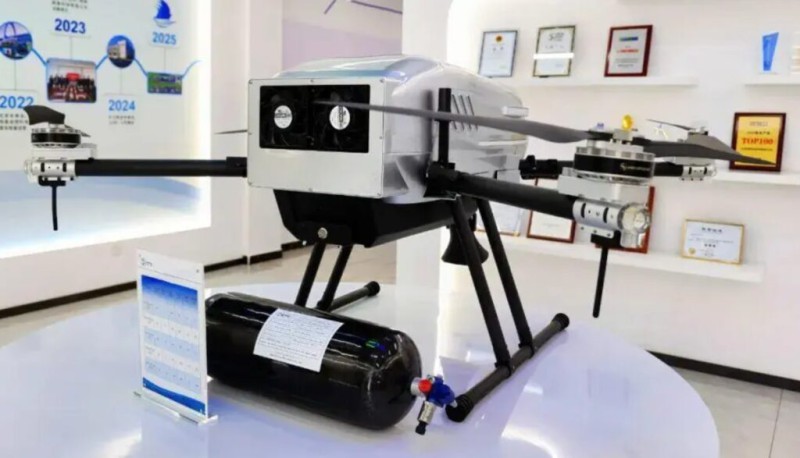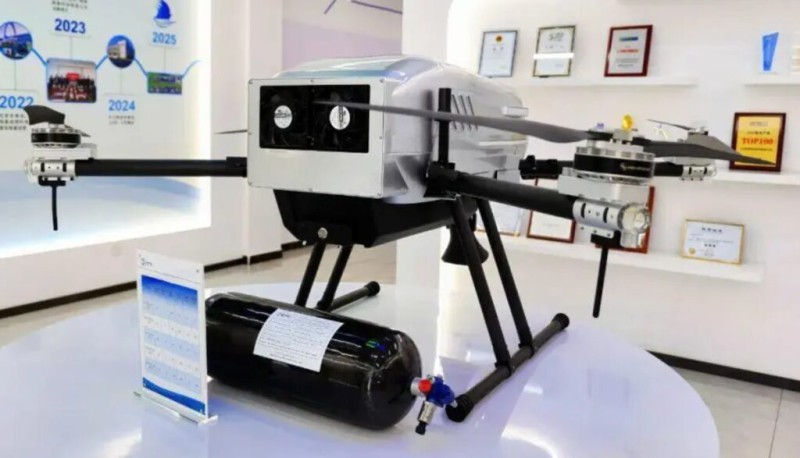

According to a person in charge of CTC, one of the core breakthroughs of this maiden flight is the leap in lightweight hydrogen storage cylinders. The 20-l 35 MPa hydrogen storage cylinder carried by the drone weighs less than 6 kg, which is at least 1 kg lighter than similar products on the market. This “slimming down” is not a simple subtraction, but a breakthrough in materials and processes, freeing up valuable payload space for the aircraft, says CTC.
More importantly, hydrogen-powered drones can not only complete difficult manoeuvres such as fixed-point and multi-point cruising, but hydrogen storage cylinders also enable revolutionary endurance performance: 3.5 h of continuous hovering, stable flight control at a maximum distance of 25 km, far surpassing the lithium battery’s endurance of only about 1 h; the characteristic of stable operation in low-temperature environments makes it more advantageous in all-weather operation scenarios such as emergency and inspection.
By building a complete system of hydrogen fuel cells and hydrogen storage units, this drone provides solid technical support for the needs of low-altitude flights with long flight time, large load and all-weather operations, CTC concludes.





 Lu public network security: 37140202000173
Lu public network security: 37140202000173



